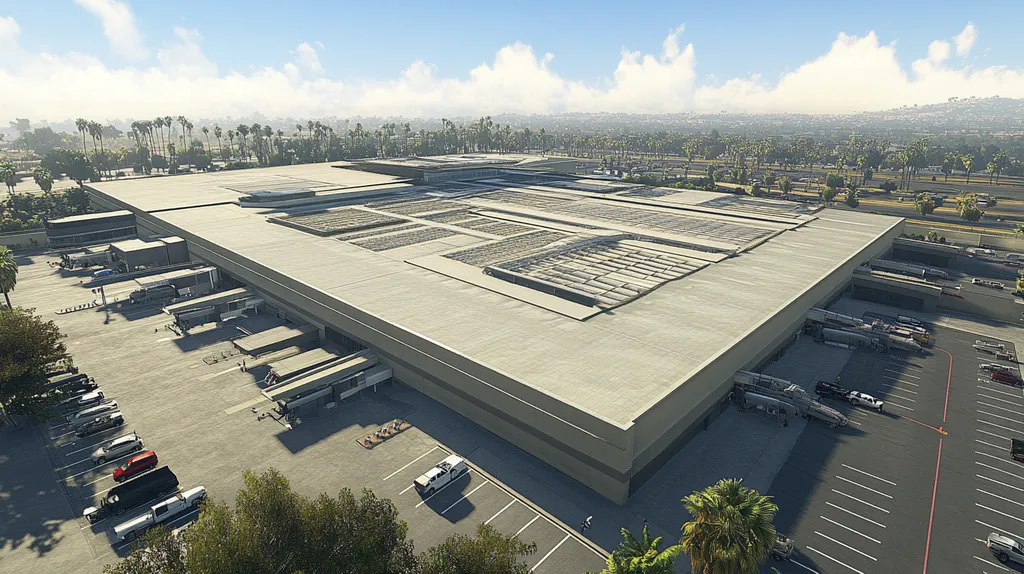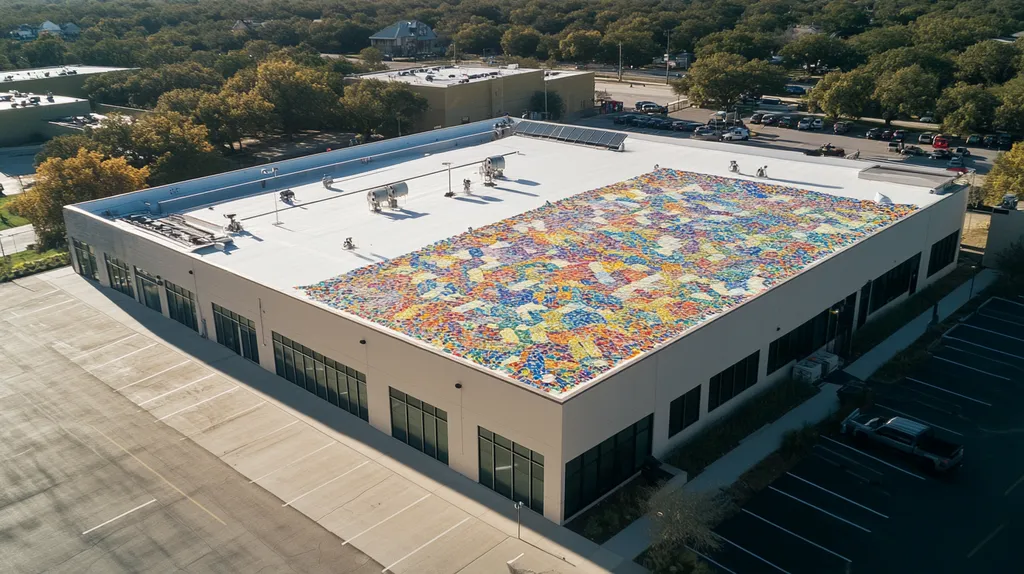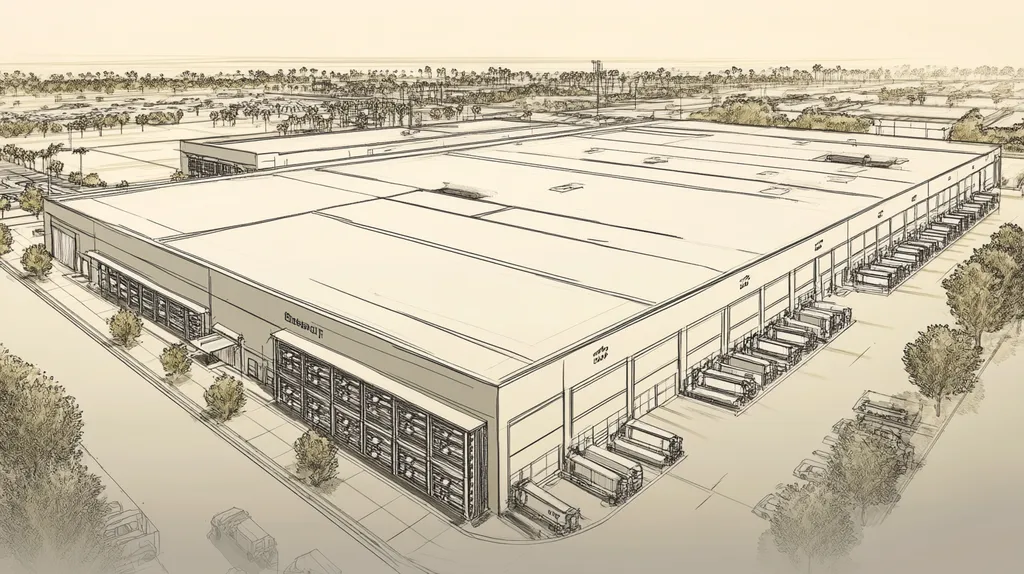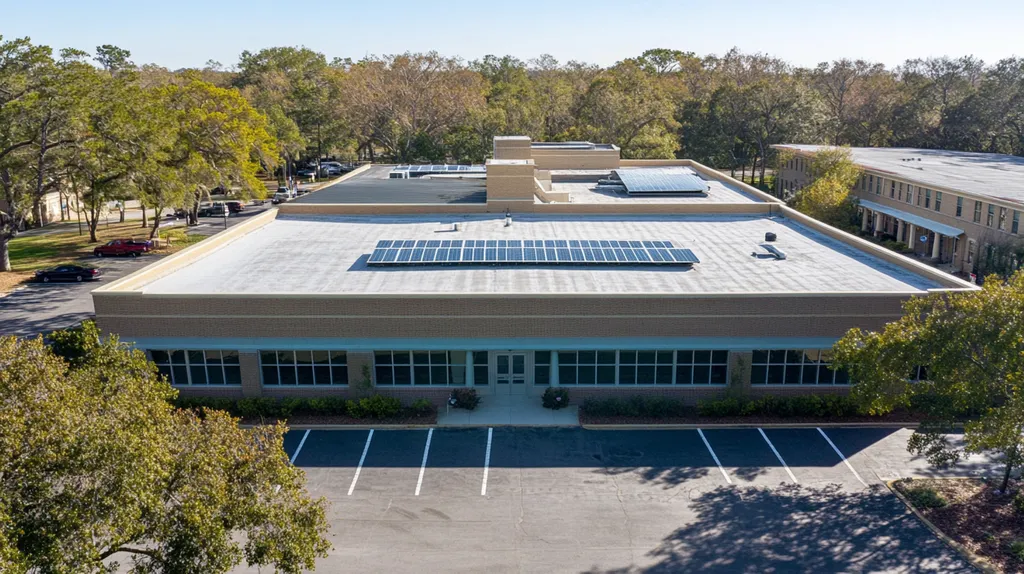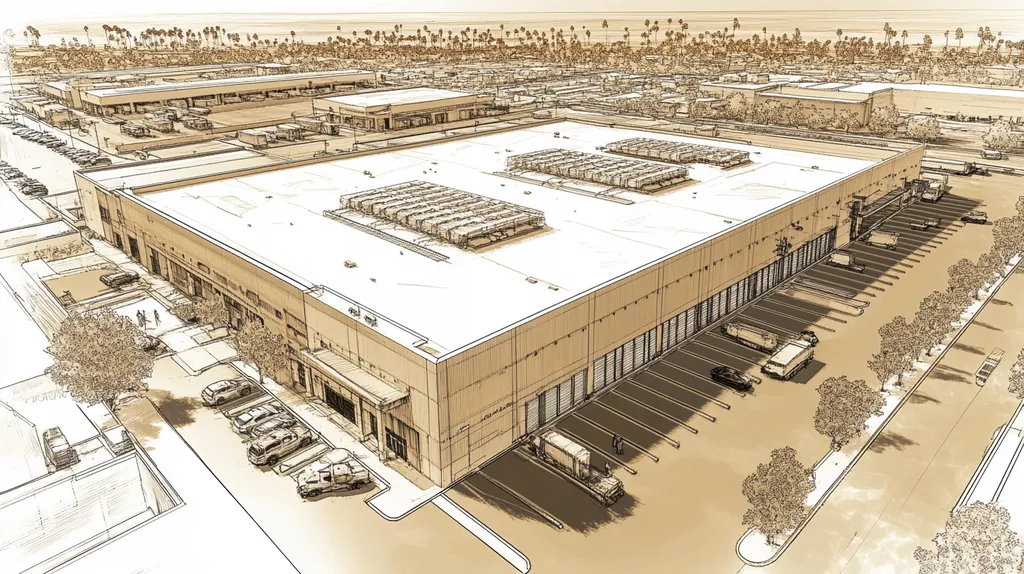Fire safety misconceptions in commercial roofing put billions in property assets at risk each year, with industry data showing 72% of building owners incorrectly assess their roof’s fire resistance capabilities.
From outdated beliefs about metal roofing to dangerous assumptions about fire resistance ratings, these myths create vulnerabilities that can lead to catastrophic losses.
This analysis examines six critical areas where misinformation about commercial roof fire safety features threatens both lives and property, while providing evidence-based solutions for protection.
SECTION 1: COMMON MISCONCEPTIONS
Fire safety misconceptions in commercial roofing persist despite clear evidence of their dangers. Industry surveys show that 72% of building owners incorrectly assess their roof’s fire resistance capabilities, potentially putting millions of dollars in assets at risk. These misunderstandings often lead to inadequate safety measures and improper material selections.
By examining three prevalent myths, we can better understand how to protect commercial buildings and their occupants from fire-related disasters.
Myth: All Commercial Roofs Have Equal Fire Resistance
Commercial roofing materials vary significantly in their ability to resist fire. While all materials must meet basic code requirements, their actual performance during fire events differs substantially.
Built-up roofing (BUR) systems typically offer superior fire resistance compared to single-ply membranes due to their multiple protective layers. However, proper installation and maintenance are crucial for maintaining these protective qualities.
Class ratings (A, B, and C) indicate specific levels of fire protection, with Class A offering the highest resistance. Many property owners mistakenly assume their roofs automatically qualify for Class A protection.
Understanding these distinctions is crucial for selecting appropriate roofing systems, especially in areas with strict fire codes or high exposure to external fire threats.
Myth: Metal Roofs Are Fire Hazards
The misconception about metal roofs being fire hazards stems from outdated information and confusion about heat conductivity. Modern metal roofing systems are engineered specifically for fire resistance.
Metal roofing maintains its structural integrity at temperatures exceeding 1,500°F, while traditional materials may fail at much lower temperatures. This characteristic makes metal roofing particularly valuable in industrial settings.
Contemporary metal roofing systems include fire-resistant underlayments and insulation that enhance their protective capabilities. These additional components create comprehensive fire protection that exceeds most alternative solutions.
The non-combustible nature of metal roofing actually helps contain fires and prevent their spread across building sections.
Myth: Fire Only Occurs in Neglected or Old Buildings
Building age alone does not determine fire risk. Modern structures face unique challenges from complex electrical systems, HVAC equipment, and rooftop installations that can create fire hazards.
Statistics show that newer buildings often experience fires due to installation errors or material incompatibilities. These issues can manifest regardless of building maintenance standards.
Fires can happen in any building, regardless of its age or condition. Although older buildings might have antiquated wiring or materials that raise fire danger, modern buildings are not fireproof. (source: Control Fire Systems Blog)
Regular inspections and maintenance remain essential for all commercial buildings, as fire risks evolve with changing building uses and environmental conditions.
SECTION 2: PRACTICAL IMPLICATIONS
Fire safety features in commercial roofing represent a critical line of defense that’s often compromised by poor understanding and implementation. Recent data shows that 40% of commercial building fires spread through roofing systems, leading to catastrophic losses that could have been prevented with proper safety measures.
When property owners and facility managers grasp the real-world implications of fire safety decisions, they can make informed choices that protect both lives and assets.
Impact of Fire Safety Misunderstandings on Roof Design Choices
Many commercial property owners prioritize initial cost savings over comprehensive fire protection, leading to dangerous compromises in roof design. This often results in selecting materials based solely on price point rather than fire resistance ratings.
Design oversights frequently occur at critical junctures where different roofing components meet. These transition points become vulnerable to fire spread when proper fire-stopping materials and methods aren’t specified in the original design.
Local building codes establish minimum fire safety requirements, but meeting these baseline standards often proves insufficient for comprehensive protection. Properties with specialized uses or higher risk factors require enhanced design considerations beyond basic compliance.
Insurance carriers increasingly scrutinize roof design choices when determining coverage and rates. Properties with superior fire-resistant design features typically qualify for premium reductions, while those with minimal protection face higher costs or coverage limitations.
Consequences of Ignoring Fire Codes and Standards in Roofing
Code violations in commercial roofing can trigger immediate operational disruptions through failed inspections and mandatory shutdowns. These enforcement actions often occur at the worst possible times, such as peak business periods.
Beyond regulatory penalties, non-compliant roofing systems create liability exposure that can exceed standard insurance coverage limits. Building owners may face personal liability when willful code violations are discovered after a fire incident.
Fire damage in buildings with code-compliant roofing systems typically remains contained to the area of origin. In contrast, structures with substandard systems often experience total losses as fire spreads rapidly through compromised roofing assemblies.
Believing false ideas about fire protection leads to insufficient safety measures that can result in catastrophic property damage and loss of life, even in modern well-maintained buildings. (source: Control Fire Systems Blog)
Risks of Inadequate Fire-Resistant Materials and Installation Practices
Substandard roofing materials can accelerate fire spread rather than containing it. Even materials marketed as “fire-resistant” must be properly tested and certified for their intended use to provide reliable protection.
Installation errors commonly occur around roof penetrations, where pipes, vents, and equipment require special fire-stopping details. These vulnerable points demand careful attention during installation to maintain the roof’s fire-resistant integrity.
Weather exposure and aging can degrade fire-resistant properties over time. Regular inspections must verify that protective features remain intact and effective throughout the roof’s service life.
Roof repairs using incompatible or non-rated materials create weak points in fire protection systems. Even small compromises in material selection can nullify the benefits of an otherwise well-designed fire-resistant roof assembly.
SECTION 3: COST OF MISINFORMATION
When commercial property owners misunderstand fire safety features, the financial impact extends far beyond immediate repair costs. Industry data reveals that fire-related roofing incidents cost businesses an average of $3.2 million per event when accounting for property damage, business interruption, and liability exposure. This figure has increased by 40% over the past decade, driven by rising material costs and stricter regulatory requirements.
Understanding these financial implications is crucial for making informed decisions about commercial roofing investments and maintenance strategies.
Financial Burdens from Premature Roof Replacement or Repair
When property owners fail to properly implement fire safety features during initial installation, they often face accelerated replacement cycles. What should be a 20-25 year roof system may require replacement in just 10-15 years due to compromised fire protection elements.
Emergency repairs caused by fire safety deficiencies typically cost 3-4 times more than planned maintenance. These unexpected expenses strain maintenance budgets and force difficult decisions about resource allocation.
The ripple effect of premature replacement extends to building operations, requiring temporary shutdowns that impact tenant satisfaction and revenue streams.
Many owners find themselves trapped in a cycle of reactive maintenance, addressing symptoms rather than root causes of fire safety deficiencies.
Increased Insurance Premiums Due to Fire Safety Non-Compliance
Insurance carriers now scrutinize roofing fire safety features more carefully than ever before. Properties with documented fire safety deficiencies face premium increases of 25-40% on average.
Some insurers have begun requiring third-party fire safety audits before renewing coverage. These inspections often reveal previously unknown compliance issues that must be addressed immediately.
Buildings with multiple fire safety violations may find themselves uninsurable in traditional markets, forcing reliance on expensive high-risk insurance pools.
The cumulative cost of elevated premiums often exceeds what owners would have spent on proper fire safety measures during initial construction or renovation.
Hidden Costs of Fire Damage and Downtime in Commercial Properties
The most devastating financial impacts often come from business interruption after a fire incident. Even minor fires can trigger extensive investigations and repairs that shut down operations for weeks or months.
Tenant businesses frequently fail to survive extended closures, leading to lost rental income and expensive tenant turnover costs. This creates a domino effect that impacts property values and financing options.
Environmental cleanup and regulatory compliance requirements following a fire can drain resources long after the initial incident. These costs often fall outside standard insurance coverage.
Beyond direct losses, properties that experience fire incidents face lasting reputational damage that affects their marketability and valuation. Fires can happen in any building, regardless of its age or condition, making proper fire safety features essential for long-term property protection. (source: Control Fire Systems Blog)
SECTION 4: REALITY CHECK
Commercial roof fire safety demands immediate attention as misconceptions continue putting properties at risk. Recent industry data shows that 65% of catastrophic roof failures during fires stem from inadequate understanding of safety ratings and maintenance requirements. Property owners and facility managers must grasp three critical elements: the true meaning of fire resistance ratings, metal roofing’s role in fire protection, and the necessity of regular inspections.
Fire Resistance Ratings and What They Really Mean for Roofs
Fire resistance ratings reflect standardized testing under controlled conditions, but real-world performance depends on multiple factors. The common A, B, and C classifications indicate resistance to different fire exposure levels, with Class A offering protection against severe exposure.
These ratings specifically measure performance against flame spread, penetration, and burning brand tests. However, they don’t account for installation quality, material aging, or interactions between roofing components.
Many roofing assemblies lose their rated fire resistance when penetrations are added for equipment or when repairs use incompatible materials. Even Class A systems require proper installation and maintenance to maintain their protective capabilities.
The testing parameters for these ratings assume specific conditions that may not match actual fire scenarios. Understanding these limitations helps property owners implement additional safeguards where needed.
The Role of Metal Roofs in Enhancing Fire Safety
Metal roofing systems offer distinct advantages in fire protection through their non-combustible nature and high heat resistance. These systems maintain structural integrity at temperatures exceeding 1,500°F, while many conventional materials fail at much lower temperatures.
The reflective properties of metal roofing help dissipate heat, reducing the risk of fire spread from external sources. This characteristic proves especially valuable in urban environments where building-to-building fire exposure presents significant risks.
Modern metal roof assemblies incorporate fire-resistant underlayments and insulation that enhance their protective capabilities. These additional components create comprehensive protection that exceeds most alternative solutions.
The durability of metal roofing systems helps maintain fire protection levels over time, requiring less frequent replacement than traditional materials. This longevity translates to more consistent fire safety performance throughout the roof’s service life.
Importance of Regular Fire Safety Inspections and Maintenance
Regular inspections form the backbone of effective fire safety programs for commercial roofs. These evaluations must address not only visible surface conditions but also hidden components that affect fire resistance.
Critical inspection points include penetration seals, expansion joints, and transitions between different roofing materials. These areas often deteriorate faster than the main roof surface and can compromise overall fire protection.
Maintenance programs must specifically target fire safety features, including clearing debris that could serve as fuel and maintaining proper drainage to prevent combustible material accumulation. Professional inspections should occur at least twice annually, with additional checks after severe weather events.
Fires can happen in any building, regardless of its age or condition, making proper inspections and maintenance essential for maintaining effective fire protection systems. (source: Control Fire Systems Blog)
SECTION 5: EVIDENCE-BASED ALTERNATIVES
Fire-related roofing failures cost commercial property owners over $1.2 billion annually in direct damages and business interruption. Despite these staggering losses, many buildings still lack proven fire safety features that could prevent catastrophic outcomes. Modern roofing technology offers multiple evidence-based solutions that significantly reduce fire risks while providing long-term cost benefits.
Selecting Roofing Materials with Proven Fire Resistance
Metal roofing systems stand out as a premier choice for commercial buildings requiring maximum fire protection. These systems maintain their structural integrity at temperatures exceeding 1,500°F, far surpassing conventional materials.
As a non-combustible material with the highest Class A fire resistance rating, metal roofs excel at protecting buildings in lightning-prone regions by safely conducting and dissipating electrical charges. (source: DECRA Metal Roofing)
Modified bitumen and built-up roofing systems with multiple protective layers offer enhanced fire resistance through redundant barriers. These systems prevent flame spread between layers, containing potential fires at their source.
Thermoplastic membranes like TPO and PVC feature self-extinguishing properties that actively resist flame propagation. Their heat-welded seams create continuous protection without vulnerable transition points.
Integrating Fire-Resistant Barriers and Coatings in Roof Systems
Gypsum cover boards create critical thermal barriers between insulation and roofing membranes. These boards maintain their integrity during fire exposure, protecting underlying materials from heat damage.
Mineral wool insulation provides superior fire resistance while maintaining its structural properties at high temperatures. This material creates effective fire stops at roof perimeters and penetrations.
Intumescent coatings expand when exposed to heat, forming an insulating barrier that shields substrate materials. These coatings particularly benefit metal deck assemblies and structural components.
Fire-resistant sealants at penetrations and joints prevent flame spread through typically vulnerable areas. Regular inspection ensures these critical components maintain their protective properties.
Implementing Fire Safety Through Design and Ventilation Improvements
Strategic placement of fire walls and barriers subdivides large roof areas into manageable compartments. This compartmentalization prevents rapid fire spread across extensive roof surfaces.
Automated smoke vents integrated into the roof design facilitate rapid heat and smoke release during fire events. These systems reduce structural damage while improving visibility for emergency responders.
Proper drainage design prevents pooling water that could compromise fire-resistant materials over time. Adequate slope and drainage paths maintain the roof’s protective capabilities throughout its service life.
Rooftop equipment platforms with fire-resistant materials create safe zones around mechanical systems. These designated areas protect both the equipment and surrounding roof sections from fire exposure.
SECTION 6: TEST AND VERIFY
Commercial roof fire safety demands rigorous testing and verification to protect lives and assets. Industry data shows that 35% of catastrophic roof failures during fires stem from untested or improperly verified materials and assemblies. Without proper testing protocols, even the most advanced roofing systems can fail when exposed to real-world fire conditions.
Modern verification methods combine traditional testing with advanced technology to ensure comprehensive fire protection throughout a roof’s service life.
Methods for Fire Resistance Testing of Roofing Materials
Standard fire resistance testing evaluates roofing assemblies through specific test protocols like ASTM E108 and UL 790. These tests measure critical performance factors including flame spread, burn-through resistance, and flying brand protection.
Laboratory testing must replicate real-world conditions as closely as possible. This includes evaluating materials under different temperature ranges, exposure times, and environmental factors that affect fire performance.
Sample extraction and testing from existing roofs helps verify that installed materials maintain their rated fire resistance properties. This is especially important for aging roof systems where weathering may have degraded protective features.
Documentation of all test results creates an essential performance record that guides maintenance decisions and validates insurance compliance requirements.
Using Thermal Imaging and Fire Safety Audits on Commercial Roofs
Infrared scanning reveals hidden thermal anomalies that could indicate compromised fire protection. These scans detect issues like wet insulation or deteriorated fire barriers that visual inspections might miss.
Comprehensive fire safety audits examine both physical components and documentation to ensure complete protection. This includes reviewing maintenance records, repair history, and modification documentation that could affect fire resistance.
Digital mapping of roof conditions helps track potential fire hazards and vulnerable areas over time. This information guides preventive maintenance and helps prioritize repairs that impact fire safety.
Fires can happen in any building, regardless of its age or condition, making thorough audits and thermal imaging essential tools for maintaining effective fire protection. (source: Control Fire Systems Blog)
Establishing Routine Verification Protocols to Ensure Fire Safety Compliance
Effective verification protocols require systematic scheduling of inspections, tests, and documentation reviews. These protocols should align with both manufacturer recommendations and local code requirements.
Monthly visual inspections check for obvious deficiencies like damaged fire stops or compromised penetration seals. Quarterly reviews examine documentation and verify that all repairs maintain required fire ratings.
Semi-annual professional assessments provide detailed evaluation of fire protection systems and components. These thorough inspections often reveal developing issues before they become serious hazards.
Annual third-party testing validates overall system performance and compliance with current standards. This independent verification helps maintain insurance coverage and protect against liability concerns.
The Bottom Line
With commercial roof fires causing over $1.2 billion in annual losses, the industry can no longer afford to perpetuate dangerous myths about fire safety features.
Recent data shows that 72% of building owners incorrectly assess their roof’s fire resistance capabilities, while 40% of commercial building fires spread through compromised roofing systems.
The evidence is clear: proper material selection, regular testing, and systematic maintenance protocols are essential for protecting commercial properties from catastrophic fire damage.
By replacing outdated assumptions with evidence-based fire safety practices, property owners and facility managers can significantly reduce their exposure to devastating losses while ensuring code compliance and maintaining insurance coverage.
The stakes are simply too high to ignore these critical fire safety requirements.
FREQUENTLY ASKED QUESTIONS
Q. Do all commercial roofs have the same fire resistance?
A. No, commercial roofing materials vary widely in fire resistance capabilities and performance. While all roofs must meet basic fire safety codes, their actual resistance to fire can differ significantly. Understanding these differences is critical for proper selection and installation to ensure adequate fire protection in commercial buildings.
Q. What are the risks of poor fire safety in commercial roofing?
A. Poor fire safety practices in roofing increase the risk of devastating fires, including significant property damage and business interruption. Many incidents occur due to compromised materials or designs that fail to meet necessary fire safety standards. This can lead to higher costs and potential liability issues for property owners and managers.
Q. How do misconceptions affect commercial roof design choices?
A. Misconceptions about fire safety lead property owners to prioritize cost over safety, often compromising roof design. This can result in the wrong material selections or designs that do not adequately prevent fire spread, making it crucial to understand the real implications of fire safety choices for effective protection.
Q. How can misinformation impact the costs of commercial roofs?
A. Misinformation can lead to unnecessary premature repairs or replacements, significantly increasing costs. Property owners may spend more on emergency fixes due to fire safety oversights rather than investing in proper fire-resistant measures initially. This cycle of reactive maintenance strains budgets and operational efficiency.
Q. What should be included in regular fire safety inspections of commercial roofs?
A. Regular fire safety inspections should include evaluations of roof penetrations, seals, and transitions. Critical points can deteriorate quicker, compromising fire resistance. Inspectors should also check maintenance records and ensure fire safety features remain effective throughout the roof’s lifespan.
Q. What modern materials enhance fire safety in commercial roofs?
A. Modern materials such as metal roofing and modified bitumen provide enhanced fire safety. Metal roofing systems are non-combustible and withstand high temperatures, while multiple layers in modified bitumen further contain flames. These options ensure better protection against fire hazards.
Q. How do thermal imaging and audits enhance fire safety?
A. Thermal imaging reveals hidden issues like wet insulation that compromise fire safety. Audits assess both physical components and maintenance records to confirm compliance. Together, these tools help prevent potential fire hazards by identifying vulnerabilities before they become serious problems.
Q. What can property owners do to ensure effective fire safety compliance?
A. Property owners should establish routine verification protocols that include inspections and testing. Scheduling regular assessments ensures that materials maintain their fire-resistant properties and that compliance with safety standards is met, significantly reducing fire risks over time.

